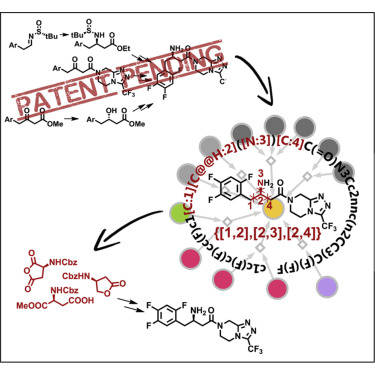| Software Bypasses Drug Patents |
| Written by Mike James | |||
| Tuesday, 05 February 2019 | |||
|
It is nice to sometimes be reminded that not all our current crop of breakthroughs are AI-based. This one is just clever computing combined with some deep knowledge of chemistry.
Pharmaceutical companies rely on holding patents to the latest blockbuster drugs that they invent, but these patents are a little different. To patent a drug you have to patent the steps needed to create it and perhaps aspects of its molecular structure. If another company finds a way to make the drug using different steps then the patent is usually still valid because they are making the same compound. To break a drug patent you need a different synthesis route and a slightly different compound. This is what the new software created by researchers in Poland and South Korea does: "Here, we describe a family of algorithms that can first identify the key disconnections underlying known and/or patented routes and then—by preserving the “key” bonds during in silico retrosynthetic planning—seek alternative, patent-evading syntheses, including those leading to blockbuster drugs." Even if you don't know a lot of chemistry, you can see that the idea is to create a database and then search for new and unpatented pathways that connect starting compounds to the desired compound - but avoiding those that are included in the patent. Some 60,000 reaction rules and 200,000 commercial chemicals, including prices, were used. To see how well it worked, the researchers tried to create non-patented pathways to synthesize commercial medication - linezolid, sitagliptin and panobinostat. Linezolid is a last-resort antibiotic, sitagliptin is an antidiabetic medication and panobinostat is a multiple myloma medication. When the program was run without the constraints, it created the patented structure and synthesis. When the constraints were added the program found alternatives in a few minutes running on a 64-core machine. What does all of this mean? When it comes to drug patents you have to worry that companies might not be willing to invest if their patents can be so easily broken. The researchers point out however that: "In a broader context, we believe that the methods we outlined not only will be useful in research practice but also will have a significant impact on how the intellectual property related to synthetic routes is protected or challenged—the former by harnessing the computer’s power to enumerate and preemptively patent very large numbers of viable synthetic routes..." So future patents get more complex and the escalation presumably continues. For us programmers it strongly indicates that there is still a lot of low-hanging fruit in terms of what software can do in other disciplines. One of the research team had training in math and computer science and perhaps this is an example of where cross-disciplinary approaches are worth trying. One of the great pleasures of being a computer scientist is being able to contribute to other people's domains.
More InformationNavigating around Patented Routes by Preserving Specific Motifs along Computer-Planned Retrosynthetic Pathways Karol Molga, Piotr Dittwald and Bartosz A. Grzybowski Related ArticlesNobel Prize For Computer Chemists The Real Reason To Learn To Program - The Power To be informed about new articles on I Programmer, sign up for our weekly newsletter, subscribe to the RSS feed and follow us on Facebook or Linkedin.
Comments
or email your comment to: comments@i-programmer.info
|
|||
| Last Updated ( Tuesday, 05 February 2019 ) |


